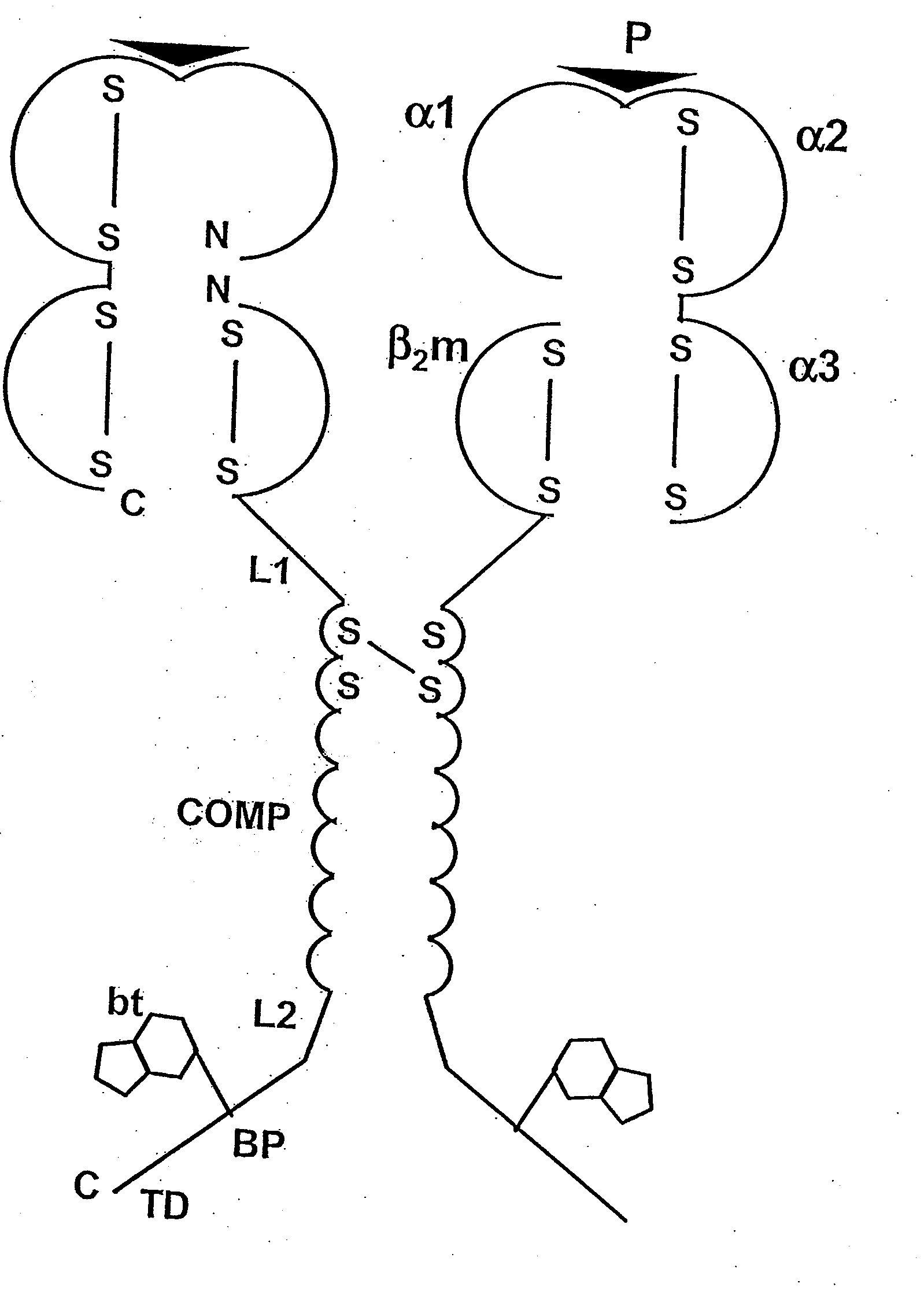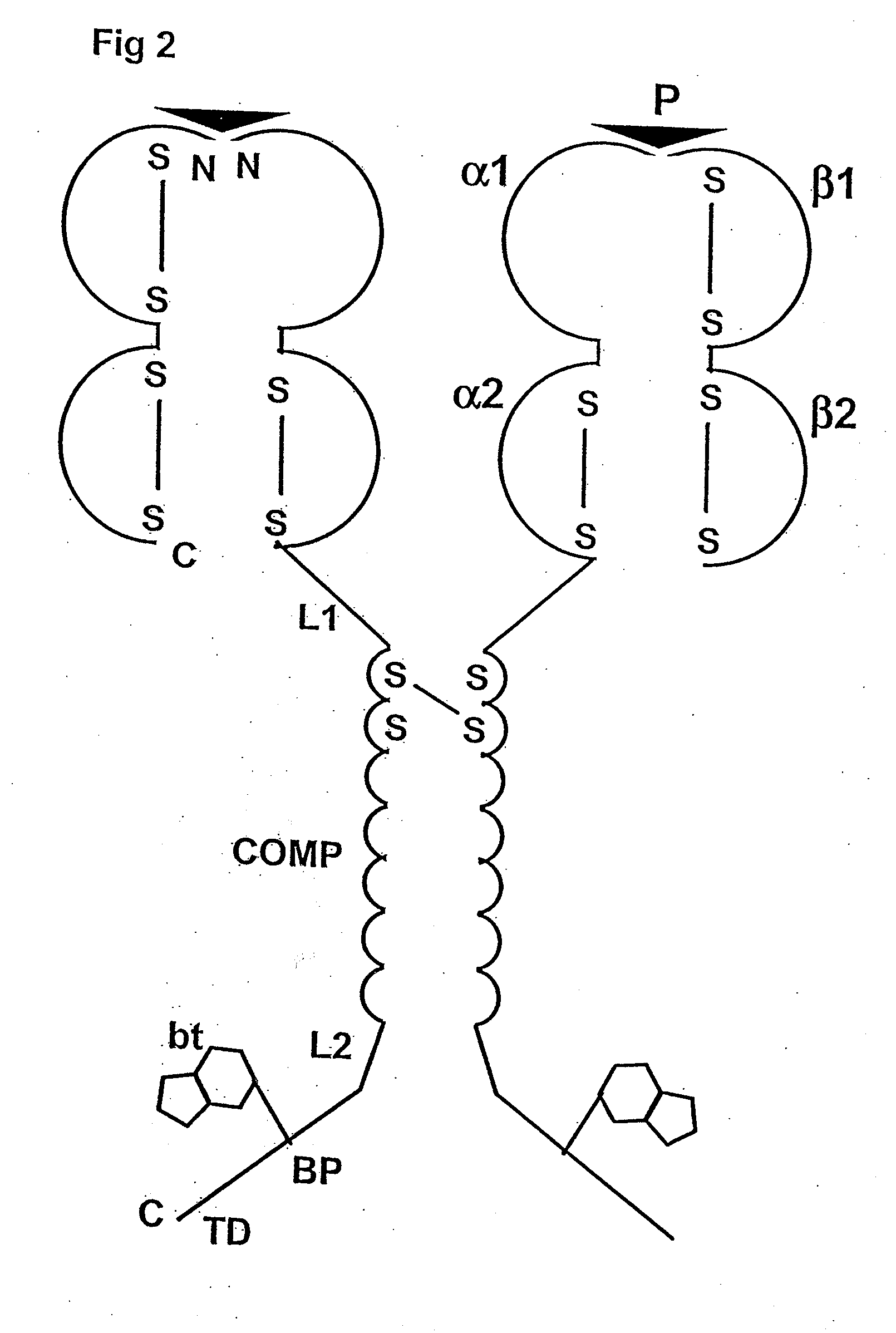Chimeric mhc protein and oligomer thereof
a technology of mhc protein and oligomer, which is applied in the field of chimeric mhc protein, can solve the problems of impede the accuracy and reliability of any assay system, the structure of the final mhc oligomer is not predictable, and the two-stage multimerisation process can be time-consuming to carry ou
- Summary
- Abstract
- Description
- Claims
- Application Information
AI Technical Summary
Benefits of technology
Problems solved by technology
Method used
Image
Examples
examples
[0088]The following is a detailed example for cloning, expressing, and purifying a pentameric class I MHC complex, which comprises a chimeric fusion of β2m with COMP. The chimeric β2m-COMP protein is expressed in insoluble inclusion bodies in E coli and subsequently assembled as pentameric β2m-COMP in vitro. The pentameric class I MHC peptide complex is then formed in a second refolding reaction by combining β2m-COMP pentamers and the human MHC class I α molecule known as HLA-A*0201, in the presence of an appropriate synthetic binding peptide representing the T cell antigen. In this example, a well characterized antigen derived from Epstein-Barr virus BMLF1 protein, GLCTLVAML (a.a. 289-297) [SEQ ID NO: 1], is used. The resultant complex is labelled with a fluorescent entity and used as a staining reagent for detecting antigen-specific T cells from a mixed lymphocyte population, in a flow cytometry application.
Molecular Cloning of the β2m—COMP Construct
[0089]The strategy involves the...
PUM
 Login to View More
Login to View More Abstract
Description
Claims
Application Information
 Login to View More
Login to View More - R&D
- Intellectual Property
- Life Sciences
- Materials
- Tech Scout
- Unparalleled Data Quality
- Higher Quality Content
- 60% Fewer Hallucinations
Browse by: Latest US Patents, China's latest patents, Technical Efficacy Thesaurus, Application Domain, Technology Topic, Popular Technical Reports.
© 2025 PatSnap. All rights reserved.Legal|Privacy policy|Modern Slavery Act Transparency Statement|Sitemap|About US| Contact US: help@patsnap.com



